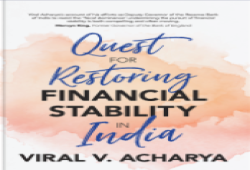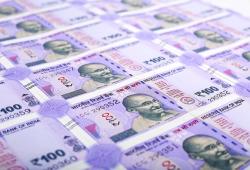I go out to buy vegetables with only a 500-rupee note. Hesitatingly, knowing it is not legal tender, I ask the vendor whether he will sell vegetables to me. He says why not, please give me the note – I can deposit it in my bank account till December 2016.
Hey, that’s true, I think to myself. Genuine transactions need not get disrupted because of demonetisation, as long as the vendor has a bank account. Hooray for financial inclusion! All those dormant accounts will become active. All those zero balance accounts will have transactions put through them. All those reluctant to have POS terminals for card payments will now be forced to do so. Hopefully, when they realise the positive impact on their businesses, they will continue to sell against cards and not cash. Finally, a move towards a cashless society is like a dream coming true.
I visualise the banks aggressively marketing POS terminals to taxi/auto drivers and small vendors. I visualise all large value property gold and forex transactions being conducted through electronic money through regulated channels. Stop dreaming I tell myself!
While dreaming of this Utopia, I am interrupted by another vegetable vendor. She says she spends Rs. 1000 each morning to buy vegetables from the wholesaler and realises the money in the evening. She can continue to recycle the money, but as this goes on, she finds that people come to her with higher denomination notes and she cannot provide the change, as the market does not have enough notes of lower denomination. She says she can only sell vegetables for minimum Rs. 500 but that affects her business. She knows she can deposit her higher denomination notes in the bank and get exchange in lower denominations but the queues are long and the bank says that they have notes of only Rs. 2000 denomination. Her business dwindles –she lives in the hope that the cash will come back into circulation.
Nevertheless, she accepts what she sees as “temporary difficulties” because she is happy that those who accumulate cash through illegal means will be penalised as they will not be able to surrender such huge amounts to the bank and she feels good that they will face huge losses. Not only they, but also all those funding elections will also be caught - serves them right –she says!
The mood is upbeat, I think to myself, despite the inconveniences and disruption of business.
I too am upbeat because I think of the impact on fake notes. I also realise that even if new notes with the best security features are introduced, the counterfeiters are so smart that it won’t take long for them to catch up. It turns out that the news report that there would be a tracking device in the new Rs. 2,000 note is also a Utopian dream! So I go back to the achievable Utopia of a cashless society –where fake notes won’t have a chance!
I visualise the banks aggressively marketing POS terminals to taxi/auto drivers and small vendors. I visualise all large value property gold and forex transactions being conducted through electronic money through regulated channels. Stop dreaming I tell myself!
So is it such a win-win looking at only the currency component of black money? What about the cost of the entire operation? Estimates put it at Rs 10,000 crore to Rs 15,000 crore. Where will this funding come -- the RBI’s balance sheet?
I remind myself that the main objective of demonetisation is to tackle black money. How much of black money will this demonetisation move impact? To the extent that cash stocks are not brought back to the banking system for exchange or credit to bank accounts, there is a definite impact on the black money, held in the form of currency. So if 20 per cent of the old notes do not return by March 2017 to RBI, the move would have impacted Rs 300,000 crore of black money in the form of cash. But the cycle can start again unless concerted measures are taken to address the problems of unaccounted money in property gold and foreign exchange transactions. Also the country still needs a law restricting the quantity of cash held at any point of time.
So is it such a win-win looking at only the currency component of black money? What about the cost of the entire operation? Estimates put it at Rs 10,000 crore to Rs 15,000 crore. Where will this funding come -- the RBI’s balance sheet? Then I start thinking of the impact on RBI’s balance sheet.
The papers are replete with the proposition that to the extent that the amount of old Rs 500 and Rs 1000 that are not replaced by issue of new notes by March 2017, the liability of RBI gets extinguished and this reduction in liability could be taken into reserves by RBI and transferred to Government as surplus! This could help in the recap of the banks –what a great idea!
Is it really so simple… this neat solution troubles me. Suddenly some clarity seems to emerge from a former staffer. Withdrawal of legal tender character does not extinguish the liability or the promise to pay by RBI. Legally, as long as the old note is brought to RBI’s counters, the promise has to be honoured. Technically, it is possible to reduce liability in the balance sheet under “notes in circulation” but the consequent reserves created will have to be kept on the balance sheet to honour the promise any time the notes are surrendered in future. So there is no free lunch!
Usha Thorat is the former Deputy Governor of the Reserve Bank of India.







